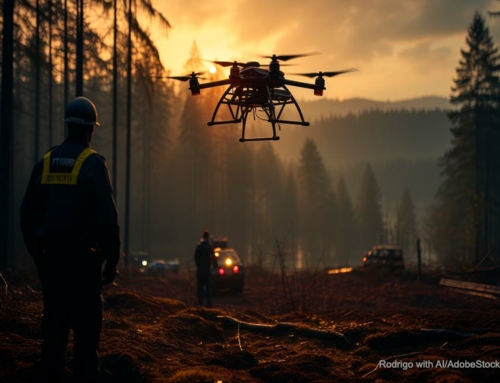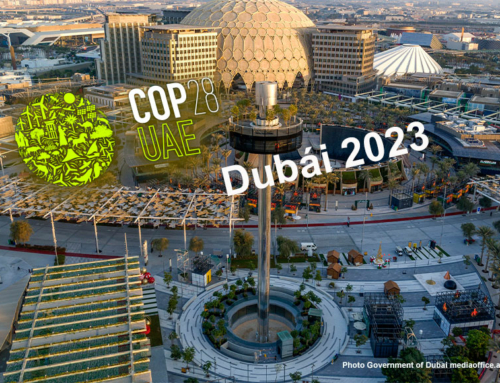Every January 26, World Environmental Education Day is celebrated. It is a propitious date to stimulate debate and the participation of all around the problem of the environment, climate change and its effects at a global level, as well as the need to comply with the SDG Objectives and Sustainable Development Goals. Among which is the SDG4 Quality Education, which includes Environmental Education.
Environmental education aims to create awareness, both globally and locally, about the importance of everyone’s participation in conserving and protecting our environment. It seeks to encourage the activation of people in their communities, to face the impacts of climate change and promotes joining global initiatives to stop it.
But it also seeks that governments and private organizations join in creating policies that seek to provide solutions to local and regional environmental problems. With a view to developing societies focused on creating a sustainable and inclusive world that provides well-being and peace for all.
A bit of history
The origin of the date is said to go back to the Declaration of the United Nations Conference on the Human Environment, First Earth Summit, Stockholm, Sweden, June 16, 1972, as stated in Recommendation 96.
“1. It is recommended that the Secretary-General, the agencies of the United Nations system, in particular the United Nations Educational, Scientific and Cultural Organization and the other international institutions concerned, after consulting and by mutual agreement, adopt the necessary measures in order to establish an international program of environmental education, with an interdisciplinary approach and with a school and non-school character, covering all levels of education and targeting the general public, especially the ordinary citizen living in rural areas and urban, to the young and the adult indistinctly, with a view to teaching them the simple measures that, within their possibilities, they can take to order and control their environment.”
As a result, UNESCO, the United Nations Environment Program (UNEP) and the Center for International Studies of the University of Belgrade, held from October 13 to 22, 1975, the International Seminar on Environmental Education, in Belgrade, then the capital of Yugoslavia, now of Serbia. It unanimously produces the creation of the environmental declaration known as the Belgrade Charter.
In its drafting, the letter defined, in its six sections, two environmental goals, one environmental education goal and six environmental education goals aimed at the general public in two categories.
Letter Content:
- The situation regarding the environment
- Environmental goals
- Goals of environmental education (EA)
- Objectives of environmental education: awareness, knowledge, attitudes, skills and evaluation capacity.
- Recipients: “The main recipient of environmental education is the general public. The letter from Belgrade, Recipients, Belgrade, 1975”
- Guiding principles of Environmental Education programs
In 1977, UNESCO and UNEP held the I Intergovernmental Conference on Environmental Education, from October 14 to 26, in Tbilisi, Georgia (former Soviet Socialist Republic), where they approved the Tbilisi Declaration.
“In recent decades, man, using the power to transform the environment, has rapidly modified the balance of nature. As a result, living species are often exposed to dangers that may be irreversible (…)
Environmental education, properly understood, should constitute a general lifelong education that reacts to the changes that occur in a rapidly changing world. Such education should prepare the individual by understanding the major problems of the contemporary world, equipping him with technical knowledge and the qualities necessary to play a productive role in improving life and protecting the environment, paying due attention to ethical values. By adopting a global approach, rooted in a broad interdisciplinary base, environmental education again creates a general perspective within which the existence of a profound interdependence between the natural and the artificial environment is recognized. This education helps to highlight the permanent continuity that links the acts of the present to the consequences of the future; it also demonstrates the interdependence between national communities and the necessary solidarity between all mankind.”
In November 2021, COP26, the Conference of the Parties to the United Nations Framework Convention on Climate Change (UNFC), was held in Glasgow, Scotland. Among the important meetings that took place on that occasion was the Summit of Ministers of Education and Environment, held on November 5, 2021.
There, under the slogan “Learn for our planet, act for the climate”, the ministers representing the almost 200 attending countries, responsible for addressing climate change, jointly adopted a “Declaration” on the occasion of the COP26 in Glasgow, United Kingdom.
“Recognizing the critical role education and learning play in the transition to a climate-positive future and the urgency of mainstreaming climate considerations at all levels of education, we commit to collaborating and investing in education for a sustainable future.”
Thus, the commitment of the governments of the participating countries remains, in taking the necessary actions to continue with the urgent work of promoting “environmental education” based on what was established in the Paris Agreement in 2015, and that now has its ” roadmap” in the 2021 Glasgow Climate Pact.
Aixa Chacin
Publishing Director







Leave A Comment